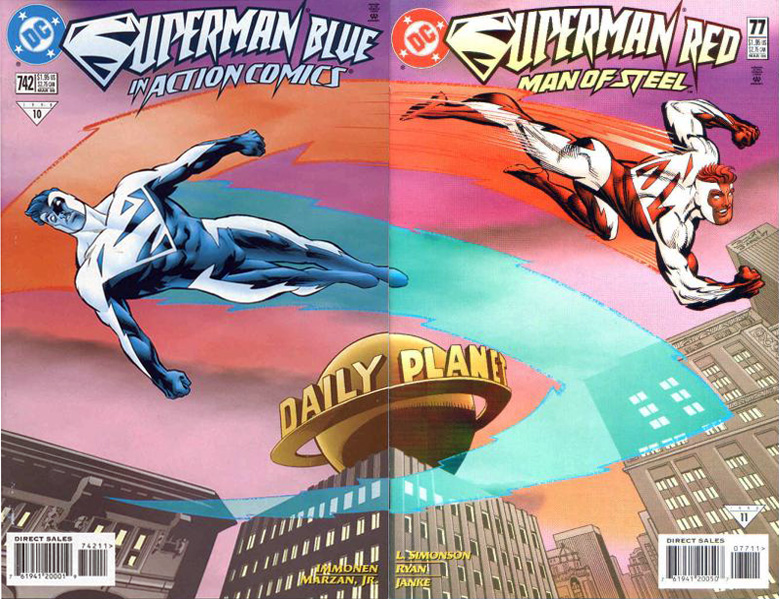Hey, Bubblenauts, I have a slight apology to make, as there’s been a slight hiccup at Bubble Control. This week, we’re going back 20 years, to March 1997, to witness the transformation of Superman into his short-lived (in hindsight) electric-based persona. But the first chapter of that story actually took place 20 years ago last week, with the release of Superman Vol. 2 #123 on March 12, 1997.
Recall, as noted in our first Time Bubble excursion to March 1952, we’re looking at the comics that came out during the week of whatever Wednesday of the month we’re currently at. That, of course, is because new comics were not always released on Wednesday, and not always just once per week. By 1997 they were though, and while the third Wednesday of March this year is the 15th, back in 1997 it was the 19th. But here’s the thing. Last week, I chose to pilot the bubble to 1977, because we had one chance to hit the 40th anniversary of Shade the Changing Man #1. So, with an entire year’s worth of apple bites at Electric Superman, I called an audible.
Still, let’s start this trip with a look back 20 years ago last week, then skip to 20 years ago this week, to the first two appearances of Electric Superman.
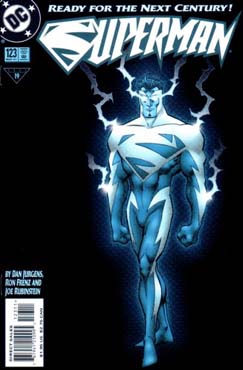 SUPERMAN #123
SUPERMAN #123
(on-sale March 12, 1997 — $1.95)
Courtesy of writer Dan Jurgens, penciller Ron Frenz, and inker Josef Rubinstein, comics fans the world over are shocked-and-awed at, “Superman . . . Reborn.” Then, because at this time there were four monthly Superman titles linked into what was, for all intents and purposes, a weekly comic book series, we were immediately on to . . .
THE ADVENTURES OF SUPERMAN #546
(on-sale March 19, 1997 — $1.95)
“Blood and Thunder,” by Karl Kesel (writer), Stuart Immonen (penciler), and Jose Marzan Jr. (inker), is the second chapter of the amazing electric Superman as ol’ Big Blue faces off against Metallo! But not really a fair fight, as I recall, given that so far as Electric Superman was concerned it was (WARNING: Bronze Age reference) “Kryptonite Nevermore!”
In a recent interview on ComicBook.com, Jurgens spoke about the genesis of the big change in Superman’s look, linking it to the classic Silver Age story of Superman Red/Superman Blue, published way back in Superman #162, which hit stands on May 2, 1963.
However, what really caught my attention was Jurgens’ admission that, whereas the classic “Death of Superman” storyline from four years earlier had been tightly plotted from beginning to end, the electric saga was far more of a free-form thing, much to its detriment.
“I’d say it got a bit unwieldy there for a time,” Jurgens said. “Big stories like that really need to have a certain amount of control exerted over them and we didn’t quite have that here. It was probably too big and the focus drifted a bit too much.”
I would certainly agree. At the comics shop where I got my four-color fix at the time, the running bet was just how long this “stunt” was going to last. No one, not me, not one single person I spoke to, thought for one hot second this was going to be the permanent change it was promoted as. And yet, I think because DC had invested a lot of effort into the “THIS changes everything!” narrative, I suspect TPTB were loathe to let readers off the line too quickly, lest they be proven prescient in their naysayings. Still, I only recall my fellow fans and me waiting for “this whole stupid thing” to wrap up. Our emotional investment in Electric Superman only went so far as wondering if, when Superman finally returned to his classic powers and costume, he’d still sport his bright red cod basket. After all, if when Superman returned his red trunks were left behind — and I think the New 52 bore us out here — THAT would change everything.
Still, I maintain that if the Electric Superman storyline had gone of for just enough issues to fill a trade paperback, instead of an entire year, it might be more fondly remembered today, just as the original Superman Red/Superman Blue story is — because, let’s face it, Red/Blue was one of the goofiest issues of the entire goofy Silver Age.
In a Panel Discussions podcast, Superman artist of the era Jon Bogdanove, said the Electric Superman story was actually given to the creators of the four Superman titles at the annual writers retreat known as the Super Summit. The reaction to the top-down mandate, he says, was, “Yeah, okay [shrug].”
“That was a period when the company was looking for the next ‘Death of Superman.'” he said. “We were deep into event-driven books.”
Bogdanove is a fella dedicated to the classic Superman, and seems to have cared as little for even long-haired mullet look as the “speedskater” uniform. Still, he fondly recalls the storytelling potential opened up by the electric saga.
“What saved the whole thing for me,” he said, “was when I realized that Superman Red/Superman Blue weren’t just duplicates of the same guy, that you could really treat it like two sides of Superman’s personality. And that was really fun, because Superman Blue in our book became the serious Superman, and Superman Red was more of the late-’40s bantering Superman. It was different sides of his personality, without one being crazy and bad. They were just different sides of his own personality.”
So, in a way, a bit like New 52 Superman (who may not be as dead as he seemed) and the pre-52 Super-dad version. Interestingly, although DC is not doing much to trumpet the 20th anniversary of Electric Superman, the current storyline, also titled “Reborn,” plays with red/blue divinations of the Man of Steel in auras seen surrounding New- and Pre-52 versions.
Yeah, in comics, everything that’s old is new again!
These first Electric issues hardly command a premium these days, but then few comics from this era do. While it’s 20 years old, expect to pay no more than $5 for a copy of Superman #123 in Near Mint, while anything in less than Very Fine is hard to unload at any price. The Adventures Of book goes for just $3 in Near Mint, the same as most standard issues of the series.
And now, for the remainder of the DC Comics that celebrate their 20th birthdays this week, having also hit stands on March 19, 1997:
[ASIDE: The first thing you will note is that DC ran a bunch of different price points back then. While what few comics are sold on regular newsstands today are more expensive that the exact same product sent to comic book stores, the publishing philosophy was the exact opposite 20 year ago, with comics that were available on newsstands generally priced at $1.75. The exception being the more milkable Batman and Superman titles, which were printed on glossy paper and sold for $1.95. Comics that were only available in comics shops tended to go for $2.25, although some low-print run and mature readers titles sold for $2.50, although some prestige books, like The Long Halloween, sold for $2.95.
The $1.75 to $2.50 price spread from 1997 translates to between $2.65 and $3.78 in 2017 dollars. So, as you can see, your comic book cover price is still outpacing the rate of inflation.]
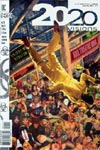 2020 VISIONS #1
2020 VISIONS #1
(Vertigo — $2.25)
A new Vertigo limited series by Jamie Delano (writer), with art on “Lust for Life, Part One,” by Frank Quitely.
There’s not much interest in this series on the back issue market — look for cover price or less in Near Mint. And I guess this is as good a place as an to mention The $3 Rule. The minimum price most guides will list for back issues always happens to be the current going rate for new comics. Because new comics today sell for at least $2.99, guide will give $3 because, let’s just come right out and say it, they don’t make money selling price guides by telling you anything is worthless. Still, there is a wide disparity between what guides list and what actually happens out in the marketplace, even for those guides that purport to be a summary of actual prices realized during the past year (Lookin’ at you, Overstreet!). But the reality is that most of the comics listed below as “worth” $3 actually don’t often sell as single issues. Even though they are now 20 years old, most trade hands on eBay, at actions, and out of discount bins essentially priced by the pound.
And that’s the case with 20/20 Visions, although, even at $3, who doesn’t like them some Quitely?
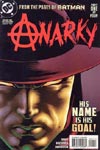 ANARKY #1
ANARKY #1
($2.50)
The then-new Bat-villain gets his own four-issue limited series in, “Does a Dog Have Buddha Nature?” by writer Alan Grant and the art team of Norm Breyfogle (pencils) and Josef Rubinstein (inks). A second, eight-issue series would follow in 1999. The 21st century has been less kind to the character, however.
If you got this issue at the time and preserved it in Near Mint, you should have realized a cool one-George profit. It goes for about $3.50.
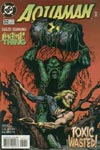 AQUAMAN #32
AQUAMAN #32
($1.75)
Aquaman is mid-run of this 75-issue series featuring the hook hand, with Swamp Thing guesting this outing in, “Sea of Green,” by Peter David (writer), Jim Calafiore (penciller), and Peter Palmiotti (inker).
Apart from the first few issues of this series, original issues command no more than $3 in Near Mint. Honestly, I’m surprised the hook-hand lasted as long as it did — basically the entire run of this volume. I lost a lot of money back in the day betting Aquaman would get his hand back before Superman re-donned his togs!
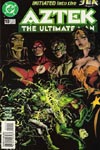 AZTEK, THE ULTIMATE MAN #10
AZTEK, THE ULTIMATE MAN #10
($1.75)
Grant Morrison weirdness came to an end in “A League of Their Own,” the last issue of this series with co-writer Mark Miller starring his champion of the secret Q Society. The series, drawn by N. Steven Harris and inked by Keith Champagne, was collected in trade paperback form a decade later, in 2008.
Following cancellation of his titular title, Aztek briefly joined the JLA, and the Ultimate Man ultimately sacrificed himself to save Superman during the 1999-2000 World War III crossover event. To date, he has not been Rebirthed, and it’ll probably be another decade or so before nostalgia demands his return.
This issue actually does better on the back issue market then #1, probably because of a JLA crossover, as Morrison’s run on that title was among the hottest things around at the time. It goes for about $10 in Near Mint, while #1 draws only $6. Nos. 2-9 go for about $4, each.
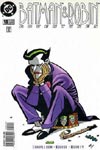 BATMAN AND ROBIN ADVENTURES #18
BATMAN AND ROBIN ADVENTURES #18
($1.75)
It’s a Joker-themed story in this second series based on the Bruce Timm animated version of the Cape Crusader and his cast of cohorts. “Joker’s Last Laugh,” was written by Ty Templeton and drawn by Brandon Kruse (pencils) and Terry Beatty (inks).
This series would end at #25 (the previous run had lasted 36), and would be followed up in 1998 by the five-issue mini-series Batman Adventures: The Lost Years.
The Joker cover makes this the third most expensive back issue of this series. Going for $8 in Near Mint, it trails only #8 ($20, due to an early DCU appearance of Harley Quinn, alongside Poison Ivy), and #21 ($25, thanks to Batgirl). With only a few exceptions, most of the remaining issues in this series sell for $3, at most.
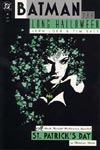 BATMAN: THE LONG HALLOWEEN #6
BATMAN: THE LONG HALLOWEEN #6
($2.95)
The seminal series by Jeph Loeb (writer) and Tim Sale (artist) is halfway through its original run as it reaches “St. Patrick’s Day.” This story has since been collected in hardcover (1998), trade paperback (1999), “absolute” (2007), and “noir” (2014) editions, the ready availability of which have served to depress market prices for the first-run floppies. This issue averages $5 in Near Mint.
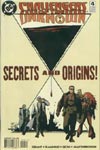 CHALLENGERS OF THE UNKNOWN #4
CHALLENGERS OF THE UNKNOWN #4
($2.25)
Speaking of Loeb and Sale, they did a version of the Challs in 1991 in an eight-issue series that followed a late ’70s failed attempt by DC to revive the title. This version took a different tack, however, keeping the name as part of DC’s short-lived “Weirdverse” title group, but swapping out an entirely new foursome. Out went marine biologist Prof. Haley, pilot Ace Morgan, mountaineer Red Ryan, and professional wrestler Rocky Davis, and in came physicist Brenda Ruskin, pilot Marlon Corbett, game designer Kenn Kawa, and race car driver Clay Brody.
This issue’s story, titled “Expose,” provides an origin for the group, but although I remember liking this series at the time, I don’t recall what the origin happened to be, and what connection there was to the original Challs, who did appear in some issues. To the best of my knowledge, this 18-issue series has never been collected, which is kind of too bad, I guess. But there’s little demand, it seems. Issues go for $3, at most, and even that is minimum place holder in most price guides. You can easily score high grade issues for less, although it might take some time to complete the run.
Most early issues, including this one, were penciled by John Paul Leon and inked by Shawn Martinbrough. Series writer Steven Grant revealed in a 2000 interview that the groundwork for this series was laid in a tv series pitch designed to take a more multicultural approach to the series’ original “living on borrowed time,” concept.
To the best of my (admittedly limited) knowledge, this particular Challengers foursome never appeared again after this series got canceled.
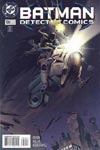 DETECTIVE COMICS #709
DETECTIVE COMICS #709
($1.95)
“Heart of Stone” is also the middle chapter of “The Death Lottery,” by Chuck Dixon (writer), Graham Nolan (penciller) and Bill Sienkiewicz (inker). I have this issue. Read it when it came out. Don’t remember a thing about it. A cool $3 is the max you can look to pay on the back issue market. If that. This was from one of those periods DC has gone though in which it presumed it could goose sales on ‘Tec by minimizing the actual title and emphasizing the fact that it starred Batman. We should do a logo review sometime.
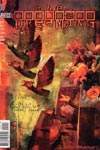 THE DREAMING #12
THE DREAMING #12
(Vertigo — $2.50)
With The Sandman having gone to sleep for good with #75 in January 1997, DC needed a way to keep power on to the suction machine aimed at fanboy wallets, and this series, which launched three months later, was the answer. Surprisingly, to me at least, this cash cow gave milk for 60 issues, all the way to March 2001. The series hosted a parade of creative talent, with this issue, “Weird Romance, Part Four,” by Bryan Talbot (writer), Peter Doherty (penciller) and Tayyar Ozkan (inker). As with most comics of this era, $3 is the typical ask for a Near Mint copy.
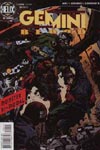 GEMINI BLOOD #9
GEMINI BLOOD #9
(Helix $2.50)
So, you probably don’t remember DC’s Helix imprint. It was supposed to do for science fiction comics what Vertigo did for horror and “mature reader” titles. But it only lasted about two years, from Sept. 1996 to Dec. 1998. Here then, we land about in the middle of the line. Gemini Blood was written by Christopher Hinz and fit into the world of his Paratwa Saga trilogy of sci-fi novels. The series was drawn by Tommy Lee Edwards, who, believe it or not, is no relation to Tommy Lee Jones.
This was actually the last issue of this particular series, which was meant to last much longer, I should think. But poor fan reception and worse sales killed the line, but for Transmetropolitan, which lived on over at the Vertigo line.
The $3 minimum applies, which means you can probably dig this out of $1 boxes.
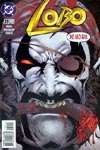 LOBO #39
LOBO #39
($2.25)
Oh, Lobo. Dear, sweet Lobo. Oh, how I hate Lobo. Some people went nuts for the Main Man, though. A few still do. After about a ga-zillion limited series, this second ongoing lasted to #64, out in May 1999. This issue, entitled “Lobo’s Guide to Girls,” was by Alan Grant (writer) and a gang-pile art team that included David Roach, Barry Kitson, Shawn McManus, Ariel Olivetti, and Pier Brito.
The $3 minimum applies, but if I owned this or any other Lobos, I’d pay you $3 to take it.
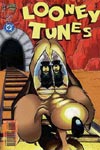 LOONEY TUNES #29
LOONEY TUNES #29
($1.75)
If you had asked me when DC launched this title in 1994 if it would still be around in March 1997, and from then end up still published today, I would have had a good and hearty laugh at your expense. But the title is still with us today, cheerily chugging along, with #237 solicited for May.
Some may wonder why DC bothers to publish this title. It doesn’t sell well in comic book shops, often finishing out of Diamond’s Top 300 each month, meaning total sales of less than 4,000 copies. But comics are still big, pop-culture entertainment products in many other countries. So, I suspect these stories are reprinted overseas to pretty good returns, marking a kind of reverse model the Disney books have followed for decades, wherein they are first published in Europe and then reprinted here in America.
But comics fans and target audience kids alike in the U.S. just don’t care. Again, the $3 rule, meaning price guides will tell you this is worth $3, but they don’t price much of anything below that, and if you’re paying that price, you’re paying too much.
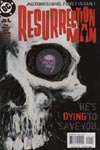 RESURRECTON MAN #1
RESURRECTON MAN #1
($2.50)
For a short while, this title seemed like it was going to be the next big thing, as I distinctly remember fellow fans being more interested in this than Electric Superman. Created by the writing team of Dan Abnett and Andy Lanning, back when they were still a writing team, along with artist Jackson Guice, the series about a man who could not die and gained a new super-power with each resurrection, was ahead of its time in terms of having an overarching plot and a strict no-tights policy. Today, it might make a good Marvel Netflix series . . . had it been a Marvel title that is.
However, although I remember a ton of buzz surrounding this title at the local comics shop when it first came out, it could not mimic the power of its headlining star and died after 27 issues. Well, not so fast, it did get reborn once, as part of the New 52 no less, but that incarnation died after 13 issues, ending on a #0.
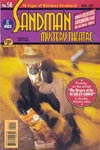 SANDMAN MYSTERY THEATRE #50
SANDMAN MYSTERY THEATRE #50
(Vertigo — 48 pages for $3.50)
Oh, man, now this series I LOVED. Written by Matt Wagner (sometimes co-written with Steven T. Seagle) and mostly drawn by Guy Davis, as this issue was, SMT was a Vertigo title that followed the adventures of the original Sandman, Wesley Dodds, in glorious pulp noir fashion.
This extra-sized issue, oddly enough for an anniversary number, was Part 2 of the four-part, “Return of the Scarlet Ghost” story. You can read the entire thing, along with the four-part “The Blackhawk” serial from SMT #s 45-58 in the 2010 TPB Sandman Mystery Theatre:The Blackhawk and the Return of the Scarlet Ghost.
The availability of collected editions helps keep down back issue priced. You’re familiar with the $3 rule by now, right?
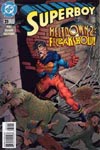 SUPERBOY #39
SUPERBOY #39
($1.95)
This series about the post-Crisis clone version Superman-When-He-Was-A-Boy was a favorite of mine of the era, at least during the periods when it was written by Karl Kesel and drawn by Tom Grummett and Doug Hazelwood. By this issue, however, Ron Marz was at the typewriter, with the drawing board manned this issue, entitled “Meltdown, Part Two,” by Ramon Bernado (pencils), with Hazelwood on inks.
This series lasted 100 issues, to May 2001, which is nothing to sneeze at. Two subsequent series lasted 11 issues (in 2011) and 34 (from 2011-2014), but the magic took its leave with Kon-El’s leather jacket, I think. Yeah, $3 rule.
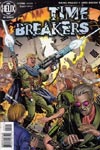 TIME BREAKERS #5
TIME BREAKERS #5
(Helix — $2.50)
The last issue of a limited series, the title about a trio dedicated to creating time paradoxes in order to preserve the integrity of the timestream — yeah, sort of the opposite set-up from most time travel tales — was by writer Rachel Pollack and artist Chris Weston.
The Wikipedia entry for this series claims it was well received and only the collapse of the Helix line kept DC from publishing a follow-up adventure for the Time Breakers team. However, if there ever was widespread popular demand for this title, it’s not evident in the back issue market. While most comics sport a minimum $3 value, as we’ve more or less made not of already, ComicBookRealmc.com still lists at the $2.50 cover price as its top Near Mint value.
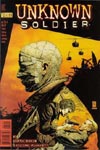 UNKNOWN SOLDIER #2
UNKNOWN SOLDIER #2
(Vertigo — $2.50)
Second of a four-issue Vertigo mini-series written by Garth Ennis, with art by Killian Plunkett, it was collected into TPB form in 1998.
After making his debut in Star Spangled War Stories #151 (on-sale April 21, 1970), the Unknown Soldier headlined that anthology until taking it over with #205 (Jan. 18, 1977). The Soldier sold well enough back in the day that he not only had SSWS rebranded in his own name, he survived the infamous DC Implosion of 1978 that killed dozens of other titles, including many super-heroes. But times there were a-changin’. By July 1982, when The Unknown Soldier ended at #268, the industry had pretty much capitulated to the ruling geek class and abandoned the casual reader, along with titles like this that appealed to young boys not all about super-heroic wish fulfillment.
Even so, there fans of the character remained, particularly among certain creators. James Owsley authored as 12-issue limited series in 1988-1989, then this series showed up a decade later. Later, an ongoing Vertigo series ran 25 issues from 2008-2010, which was collected in four trade paperbacks between 2009 and 2011. Meanwhile, the original run was collected in two Showcase Presents volumes in 2007 and 2015.
Seem like it might be about tome for a new Solder series.
And, finally, because it may be a while before we circle back this way again, here’s a quick peek at everything else DC released in March 1997, with notes where I deem appropriate:
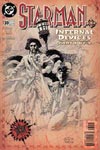 on-sale March 5
on-sale March 5
BATMAN/WILDCAT #2 $2.25
BATMAN: SHADOW OF THE BAT #62 $1.95
THE BOOK OF FATE #4 $2.25
THE BOOK OF FAERIE #3 $2.50 (Vertigo)
CYBERELLA #9 (Helix) $2.50
GREEN LANTERN #86 $1.75
JLA #5 $1.95
LOBO: CHAINED #1 $2.50
NIGHTWING #8 $1.95
PINKY AND THE BRAIN #11 $1.75
THE POWER OF SHAZAM! #26 $1.75
PREACHER #25 (Vertigo) $2.50
STARMAN #30 $2.25
STEEL #38 $1.95
SUPERMAN ADVENTURES #7 $1.75
SUPERMAN: THE MAN OF STEEL #67 $1.95
TITANS: SCISSORS, PAPER, STONE #1 $4.95, prestige format
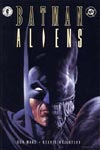 on-sale March 12
on-sale March 12
ADVENURES IN THE DC UNIVERSE #2 $1.75
ANIMANIACS #25 $1.75
AZRAEL #29 $1.95
BATMAN #542 $1.95
THE BATMAN CHRONICLES GALLERY #1 $3.50
BATMAN/ALIENS #1 $4.95 prestige format
THE BOOKS OF MAGIC #36 (Vertigo) $2.50
BRAINBANX #3 (Helix) ¢2.50
ESSENTIAL VERTIGO: THE SANDMAN THING #10 (Vertigo) $1.95
FAULT LINES #1 (Vertigo) $2.50
GREEN ARROW #120 $2.25
HOUSE OF SECRETS #8 (Vertigo) $2.50
IMPULSE #25 $1.75
JACK KIRBY’S FOUTH WORLD #3 $1.95
LEGIONNAIRES #48 $2.25
NIGHT FORCE #6 $2.25
THE SHADE #2 $2.25
SOVEREIGN SEVEN #22 $1.95
SUPERGIRL #9 $1.95
 on-sale March 26
on-sale March 26
ACTION COMICS #733 $1.95
BATMAN: LEGENDS OF THE DARK KNIGHT #94 $1.95
CATWOMAN #45 $1.95
ESSENTIAL VERTIGO: SWAMP THING #7 (Vertigo) $1.95
THE FLASH #125 $1.75
HELLBLAZER #113 (Verigo) $2.25
HITMAN #14 $2.25
THE INVISIBLES #4 (Vertigo) $2.50
LEGION OF SUPER-HEROES #92 $2.25
ROBIN #41 $1.95
SCARE TACTICS #6 $2.25
THE SPECTRE #53 $2.50
SUPERBOY AND THE RAVERS #9 $1.95
TEEN TITAN #8 $1.95
VERMILLON #8 (Helix) $2.50
WONDER WOMAN #121 $1.95
XERO #1 $1.75
And that’s it for this time trip! Where shall we stop off next week? How about the last week of March in 1967, a cool 50 years ago, when DC comics fans everywhere though the next big thing was going to be . . . The Maniaks??
